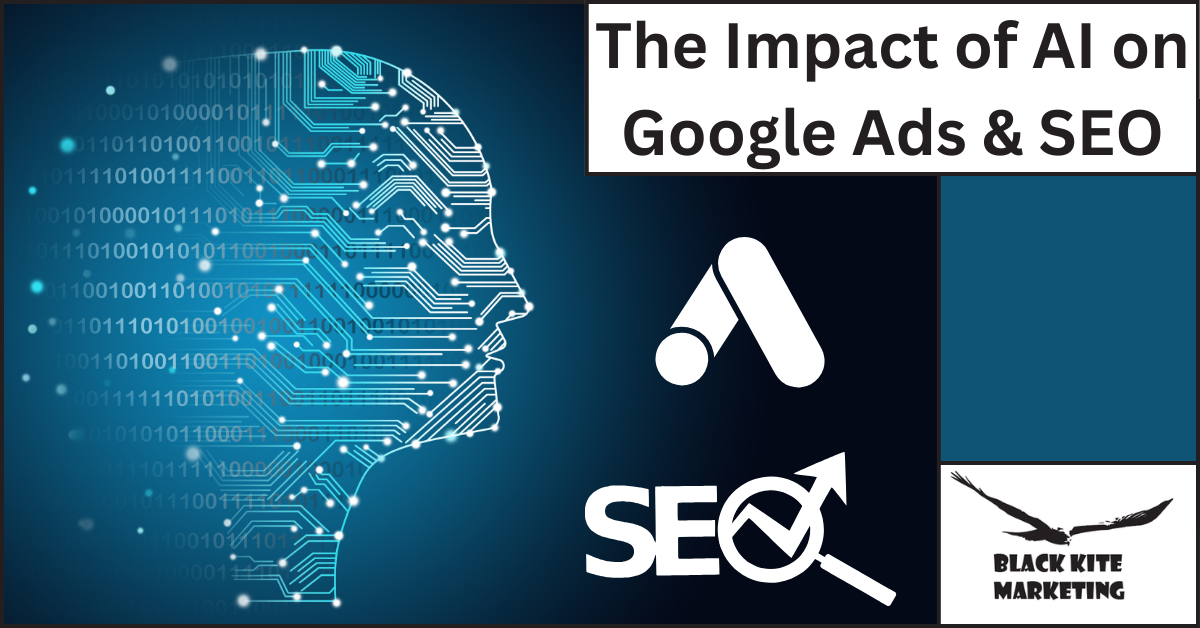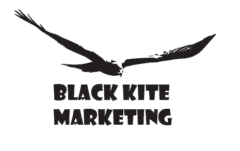
The Impact of AI on Google Ads & SEO
As artificial intelligence rapidly transforms digital marketing, its influence on Google Ads and search engine optimization (SEO) is reshaping the strategies brands use to reach their audiences. AI-driven tools in Google Ads promise more precise targeting, ad placement, and budget optimization, streamlining the advertising process. At the same time, advanced AI in SEO provides enhanced insights into user behavior and search intent, driving websites toward a stronger competitive edge. This article explores how AI is revolutionizing both Google Ads and SEO, reshaping marketing landscapes and redefining the rules of digital engagement.
The Rise of AI in Google Ads: Key Developments and Innovations
Here are some of the latest AI features in Google Ads that you can implement:
1. AI-driven search campaigns
Google’s AI-driven search campaigns analyze user intent and context, optimizing ads based on search patterns, browsing behavior, and real-time engagement. These campaigns can dynamically match ads with the most relevant keywords and audiences, leading to more effective targeting, improved click-through rates, and a higher return on investment (ROI).
2. Performance Max AI features
Performance Max campaigns leverage machine learning to drive conversions across all Google channels—including YouTube, Display, Search, Discover, and Maps. The AI optimizes in real-time to achieve campaign goals, automating asset creation, audience targeting, and ad placements. Performance Max’s “Insights” feature provides feedback on the best-performing creative elements and demographic segments, giving marketers powerful insights into campaign success.
3. Automatically created assets & Optimized Targeting
Automatically Created Assets (ACA) use AI to generate variations of ad copy, images, and videos, tailoring them to user intent and enhancing relevance. Google Ads analyzes your existing assets and user data to create customized versions that best match potential customers’ preferences. ACA saves time and improves ad performance by presenting more appealing, contextually relevant content.
Optimized targeting uses Google’s machine learning algorithms to find and reach audiences most likely to engage with your ad. Going beyond audience segments you specify, it expands the reach of campaigns based on real-time data and engagement signals, helping brands tap into broader and more relevant audiences and improve conversion potential.
4. Google Analytics 4 measurement enhancements
GA4’s AI-powered measurement tools track cross-platform data, providing insights into customer journeys across devices and channels. With machine learning models, GA4 predicts user behavior (such as likely conversions) and fills in data gaps from privacy restrictions, enabling more accurate attribution. This data can feed directly into Google Ads, enhancing targeting and campaign optimization.
5. YouTube AI-powered creative tools
Google’s AI-driven tools for YouTube ads offer advertisers the ability to automatically edit, resize, and customize video assets for maximum engagement. From trimming ads to generating compelling thumbnails, these tools optimize video content for various user demographics and engagement trends. They can also suggest the best formats for target audiences, improving ad relevance and effectiveness.
6. App campaigns
App campaigns, powered by Google’s machine learning, promote apps across Google’s properties, such as Search, YouTube, and Google Play. They optimize ad placements based on audience behavior, preferences, and app-install likelihood, with minimal setup. AI continuously refined targeting and creative elements to drive app installs and engagement, allowing marketers to focus on audience growth with less manual management.
7. Conversational Experience in Google Ads
Google is piloting conversational experiences in its Ads platform to streamline campaign creation through an interactive, chat-based setup. With this feature, advertisers can describe their campaign objectives, and Google’s AI will suggest targeting options, create ad copy, and provide real-time feedback. This makes the ad setup process simpler and more intuitive, especially for marketers less familiar with Google Ads.
Each of these features leverages AI to simplify ad creation and management, target the right audiences, and drive more effective results across Google’s ecosystem.
The Role of Technical SEO in Enhancing Ad Placement on Search Results
Technical SEO plays a critical role in enhancing ad placement on search results, as it improves a website’s overall health, user experience, and credibility—factors that Google considers when determining ad quality and placement. Here’s a look at how technical SEO influences ad performance:
1. Technical SEO for Ads
Technical SEO elements like crawlability, indexability, and site structure help search engines understand your website’s content and relevance, indirectly boosting the quality score for Google Ads. Google evaluates landing pages as part of its ad quality score, so if a website is technically optimized, it can lead to a better user experience and, in turn, improve ad performance and placement.
2. Improving Ad Ranking Through SEO
Google Ads factors in ad relevance and landing page experience to calculate the ad quality score. A technically optimized website ensures that landing pages load quickly, are well-structured, and feature relevant keywords—all of which contribute to a better quality score. Higher scores improve an ad’s ranking and can lead to lower costs per click (CPC) and better visibility in search results.
3. Site Speed Optimization for Ads
Fast-loading pages are essential for good user experience, and Google rewards pages with better load speeds. Slow pages increase bounce rates and frustrate users, reducing the likelihood of conversions. Technical SEO improvements like compressing images, minifying code, and enabling browser caching can significantly boost site speed. For ads, faster landing pages not only enhance the user experience but also improve ad quality scores, which can reduce CPC and improve ad positions.
4. Mobile Friendliness Impact on Ads
With the majority of searches now happening on mobile devices, Google prioritizes mobile-friendly websites in its ranking algorithms and ad quality assessments. Technical SEO practices such as responsive design, touch-friendly buttons, and streamlined content for mobile devices help improve mobile usability. A mobile-friendly landing page is more likely to retain users and convert them, enhancing ad performance and quality scores for mobile users.
In summary, technical SEO directly supports Google Ads by optimizing the technical aspects of a website, enhancing the quality score, improving page speed, and ensuring mobile usability. These improvements positively impact ad placement, lower CPC, and increase the likelihood of conversion, making technical SEO an essential element for maximizing ad performance on search results.
Integrating technical SEO with your Google Ads strategy
Integrating technical SEO with your Google Ads strategy creates a powerful synergy between organic search and paid advertising, enhancing ad performance, reducing costs, and maximizing ROI. Here are some best practices to align technical SEO with your Google Ads efforts effectively:
1. SEO and PPC Synergy
To maximize the effectiveness of both SEO and PPC campaigns, focus on sharing insights between the two channels. Use organic search data to identify high-performing keywords, search trends, and audience behavior, which can inform your PPC campaigns. Similarly, analyze PPC data for top-performing keywords and audience insights, using them to refine your SEO strategies. When SEO and PPC align, you reinforce brand visibility and increase the likelihood of appearing in both organic and paid search results.
2. Keyword Research Techniques for Ads
While keyword research is fundamental to both SEO and PPC, each approach benefits the other. For example, SEO keyword research provides a foundation for understanding search intent, which can shape the targeting of Google Ads. Conversely, PPC data reveals which keywords drive conversions, allowing you to focus your SEO efforts on high-value terms. Using tools like Google’s Keyword Planner, integrate these insights into your ad campaigns and organic content to align both channels with user intent.
3. Landing Page Optimization Tips
Landing page quality has a significant impact on ad performance. Optimized landing pages should load quickly, be mobile-friendly, and clearly align with the ad’s message and user intent. Use technical SEO to enhance load times, ensure page security (SSL), and simplify navigation. For ads, include targeted keywords naturally within the landing page content, particularly in headers, and design a clear call-to-action (CTA) that mirrors the ad’s offer. This not only improves the quality score of the ad but also enhances conversion rates.
4. Relevance Scoring in Ads
Google assigns a relevance score to ads based on the alignment between the ad content, keywords, and landing page experience. Technical SEO plays a role by ensuring that your landing pages are highly relevant, optimized for user experience, and clearly aligned with the keywords and messaging in your ads. By boosting relevance, you improve your ad quality score, which can lead to higher ad placements and lower costs per click (CPC). Regularly test ad copy and landing page variations to ensure relevance and engagement with users.
Additional Tips:
- Use Structured Data: Adding structured data (Schema markup) to your landing pages helps search engines understand and display your content in a more meaningful way, potentially increasing ad quality scores and click-through rates.
- Optimize Page Titles and Meta Descriptions: Ensure page titles and meta descriptions are optimized with targeted keywords for both organic and paid campaigns to create a cohesive message that appeals to users in search results.
- Analyze and Adjust Regularly: Continuously monitor both organic and paid performance metrics to identify areas for improvement. Tools like Google Analytics and Google Search Console provide data on which keywords and pages perform well, helping you adjust your approach over time.
By integrating these technical SEO best practices into your Google Ads strategy, you create a seamless experience that boosts ad relevance, improves user engagement, and drives cost-effective results.
Embrace the Latest Changes in Google Ads to Maximize Your Advertising Efforts with AI and Technical SEO Insights
The integration of AI advancements in Google Ads and technical SEO can revolutionize your advertising strategy, driving greater relevance, cost efficiency, and user engagement. By combining data-driven insights from AI-powered tools with a strong foundation in technical SEO, businesses can enhance ad placements, optimize user experience, and maximize ROI. As Google’s algorithms and ad capabilities continue to evolve, staying up-to-date with these changes is crucial to staying competitive in the digital landscape.
Ready to elevate your Google Ads strategy? Black Kite Marketing can help you leverage the latest AI and SEO insights to achieve impactful results. Reach out to our team today to learn how we can enhance your ad performance and expand your digital reach.

